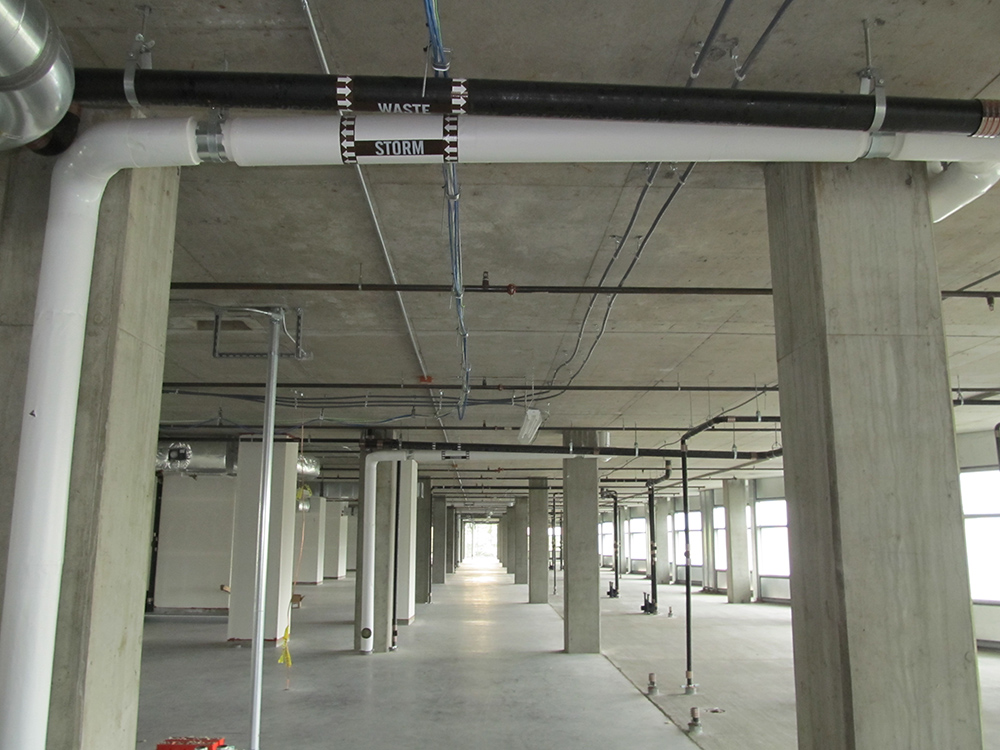Healthcare facilities are complex building types with unique services and functional units to consider during design. They are all sensitive environments that demand their own set of design considerations, while ongoing developments in the medical field drive a continuing need to update facilities. Engineering design needs to improve building structural performance with minimal interruption of patient care both during and after construction.
Reid Middleton recently provided structural engineering services for a series of support frames carrying corridor HVAC, electrical, and plumbing system at three floors of the University of Washington (UW) hospital — a good example of how engineers need to design with their users in mind. The frames allowed the systems to be fully fabricated off-site in segments and lifted into place over the corridors to minimize work inside the hospital and accelerate the schedule. Construction at one level took place immediately below the neonatal ICU, so the frames and their anchors were designed to avoid noisy or high-vibration installation methods. The contractor was told that some of the patients were so frail that even a loud noises could make their health turn for the worse, and was permitted to put a picture of one of the patients on a board in the space for emphasis. This puts the emphasis on careful design, planning, and site verification in a way that few other project types ever could.
Designing for These Projects Really Gets into Our Heads
The complexity is a relished challenge, and the impact that we are having on people’s lives makes it that much more rewarding. Healthcare can be a different world in design, though, particularly for renovations, expansions and seismic upgrades in operational hospitals. Phrases like infection control, patient privacy, and JCAHO each carry a deep meaning that drive the design process. Approaching the design without knowledge of these concepts would be futile and would not produce a design that addresses the needs of the users. Reid Middleton’s team has brought thoughtful structural solutions to nearly a dozen active medical facilities over the last five years. Many of these, such as Naval Hospital Bremerton (NHB), have invited us back multiple times to help them with their ongoing process of improvement to continue to meet patients’ evolving needs:
Resources for the Design Professional
Engineering professionals need to be familiar with the Facility Guidelines Institute’s (FGI) Guidelines for Design and Construction of Hospitals and Health Care Facilities, as well as The Joint Commission standards.
To achieve design and construction efficiency on complex facilities, Building Information Modeling (BIM) and Integrated Project Delivery (IPD) are important tools. These help move the planning forward, to get the construction team in and out of the hospital more quickly, minimizing disruption for the patients, and helping the hospital deliver on its promise to the patients.

